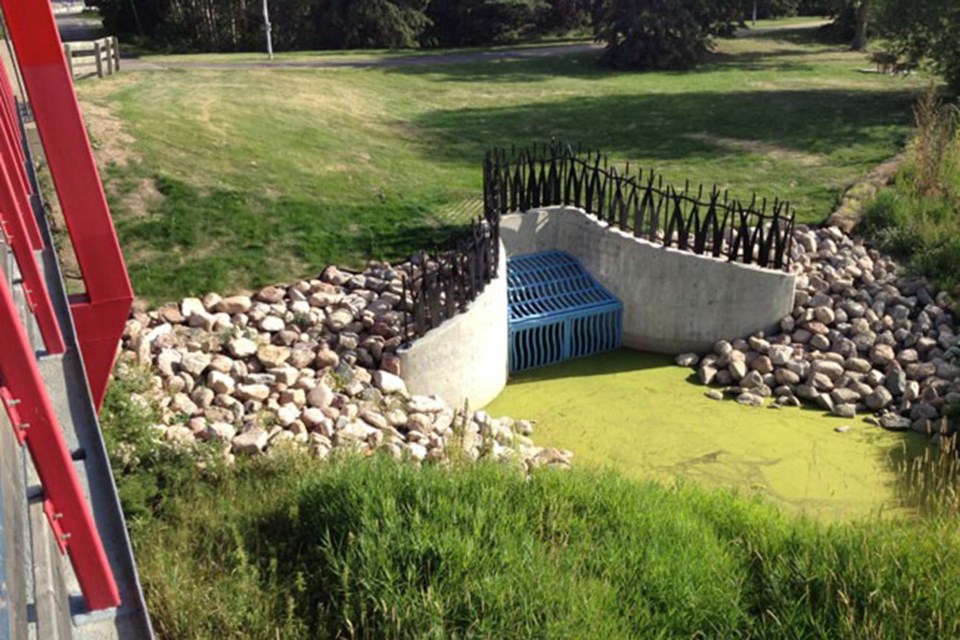The City of St. Albert will not examine the feasibility of removing sediment from the Sturgeon River after administration detailed several risks associated with the practice.
Coun. Mike Killick put forward a motion asking administration to look into the feasibility of doing a pilot project to test low-impact removal of manmade sediment from the Sturgeon River, council heard during an Aug. 15 meeting.
Killick ultimately withdrew the motion, however, after a report from administration said removing sediment and debris through practices such as dredging can be dangerous as it disturbs fish habitat, potentially negatively impacting wildlife.
“Upon reading the backgrounder it seems this is far more complex and would not be successful without a huge amount of work,” Killick said.
The report outlined that dredging is “extremely costly, logistically difficult, destructive ecologically, and requires a tremendous amount of work to obtain the necessary regulatory approvals.”
The city would require five different permits before beginning a pilot project, in addition to the completion of other requirements, such as Indigenous engagement.
“It is a common perception that dredging the riverbed will remedy many of the ecological issues we have, when there are many other approaches to improve the Sturgeon River that would be more effective over time,” the report said.
City’s sediment control
Killick's motion stemmed from an earlier June 7 council meeting, when council examined the city’s 2023 10-year utility repair, maintain, and replace (RMR) capital plan.
During that meeting, Killick also withdrew a motion — this time to remove the $3-million budget for sediment and erosion control from the RMR plan — after hearing about the importance of the program from administration.
The city kicked off the program to gradually install oil and grit interceptors on the 49 outfalls that discharge into the Sturgeon River back in 2003. These concrete structures keep truckloads of dirt out the of the Sturgeon River every year, but are expensive, and cost between $500,000 and $1.5 million each to install.
Currently, the city installs roughly one interceptor per year through a capital reserve. If council had voted to remove the funding, it would have remained in the reserve and not impacted the 2023 utility rates, the city’s director of finance said during the meeting.
During that meeting, council heard a decision to halt the installation of interceptors would put the city at risk of large penalties for endangering the Sturgeon River’s fish populations.
“Sediment input smothers fish eggs, harms invertebrates, makes predation difficult due to murky water, damages fish habitat, and increases the input of nutrients to the river,” a backgrounder from the June 7 council meeting said, noting these nutrients lead to decline in water quality.
One of the locations identified as high priority for 2023 is the outfall between Riverhouse Grill and the St. Albert Trail bridge.
There are currently nine interceptors on 49 of the Sturgeon River’s outfalls, and seven on 12 outfalls into Big Lake, some of which are unrelated to the city’s program and instead are the result of development, the backgrounder said.
The city also uses catch basins to prevent grit from reaching the river, but Regan Lefebvre, the city’s senior manager of utilities, noted the interceptors are far more effective at keeping grit out of bodies of water.
Lefebvre told council June 7 that in 2021, 1,139 city catch basins collected 175 cubic metres of sediment, whereas 14 interceptors collected 238 cubic metres.
“Those 14 are doing more work than 1,000 catch basins,” Lefebvre said.




